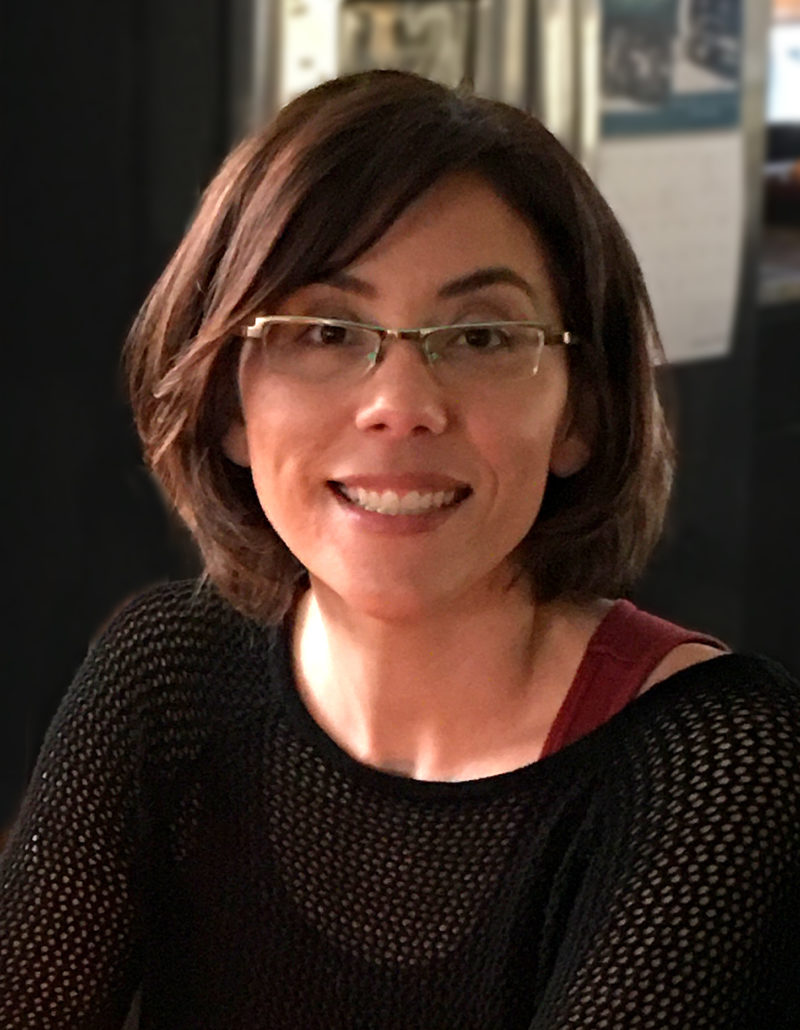

STEM+C3 is an innovative program that works to integrate computer science principles into science and math through pre- and in-service teacher training. We recently interviewed STEM+C3 Curriculum Director and former LAUSD High School science teacher, Leticia Perez, to learn more about the program, how she got involved and what CS education equity means to her.
Leticia: Computer science (CS) keeps finding me even when I’m not looking for it! My first job was learning HTML to create student websites through a partnership with NASA Dryden. I wanted to pursue medicine at that time so I didn't really keep up with the skills I learned. In 2003, I left the private sector and began teaching science in Los Angeles.
Then in 2013, I was invited to consider how we might develop a biology unit that incorporates participatory sensing that didn’t rely on external sensors. Through a grant called Mobilize, I came to realize that the inequities I had been fighting against in science classrooms were far worse when it came to accessing CS and computational thinking (CT). Around the same time, my husband began a small company to design and build humanoid robots through the use of 3D software and printers. The convergence of my personal and professional life expanded my vision of what science could look like and how I could use Next Generation Science Standards (NGSS) to help make that happen.
Leticia: STEM+C3 is so important because it looks to seat CS principles and CT into science and math classrooms that students are required to take. We hope to help students and teachers reimagine what CS might look like by exposing them to real-world applications within the context of different fields. We see CT and data science as connective tissues that work to integrate and connect the STEM silos together. In STEM classes we should be highlighting that CS is a field unto itself, while simultaneously a tool that many of the STEM disciplines are reliant upon. New insights, models, and discovery quite often depend on CS.
On a larger scale, I believe power is acquired and consolidated through a strong understanding of how our individual and collective perceptions are shaped (for better or worse) by computing and the data that’s collected and analyzed through it. Students need to know how their perceptions of the world are quite literally manipulated and given tools to respond to this manipulation.
Leticia: Folks have different purposes and reasons for saying "CS for All" education spaces. The reasons range from economic opportunity to digital literacy and citizenry; I agree with most of the reasons often cited. Yet, for me, CS equity means more than access. It means an opportunity to allow students to bring their entire self to a space and see where their lived experiences can be enhanced, altered, or recreated through meaningful interactions with technology.
We must stop creating courses that require students to change who they are as an individual in order to participate. Would we be so bold to reimagine what CS looks like? Must access to CS principles be confined to robotics or AP CS? Can CS be woven into my music class when I am learning to loop music samples or perhaps in my science course when I am programming a Micro:bit to take temperature readings at regular intervals? How can we reveal the myriad of ways computing intersects with our lives (often without us knowing) to students so that they can find their own entry point that is of interest to them?
To be clear, I am not advocating that we remove AP CS or traditional CS programming courses. There are fundamentals that require instruction and support from knowledgeable others and the format of these courses meet the needs of some. Rather, can we think of CS more holistically? Consider a library full of different content types and formats.
Leticia: Start with your passions and interest and jump in. How and where might CS or CT intersect with the things you are already doing? Not sure? Get inspired by some Ted Talks and start there!
I think for math and science teachers, data science—specifically the data cycle—is a manageable first step. Both courses have a strong start interrogating the data sources around you in your classroom and model that interrogation to the students. Where did the data come from? Why was it collected? What story is being told here? Who or what was left out and why?
Alongside STEMC3, Leticia supports the UCLA Science Project providing professional development to support teachers with the creation and maintenance of student-centered classrooms and NGSS.
She is also the curriculum author of the Mobilize Biology curriculum (a participatory sensing High School unit that incorporates data cycle into student inquiry) and an author on Pre-K-12 Guidelines for Assessment and Instruction in Statistics Education (GAISE) report (in production).